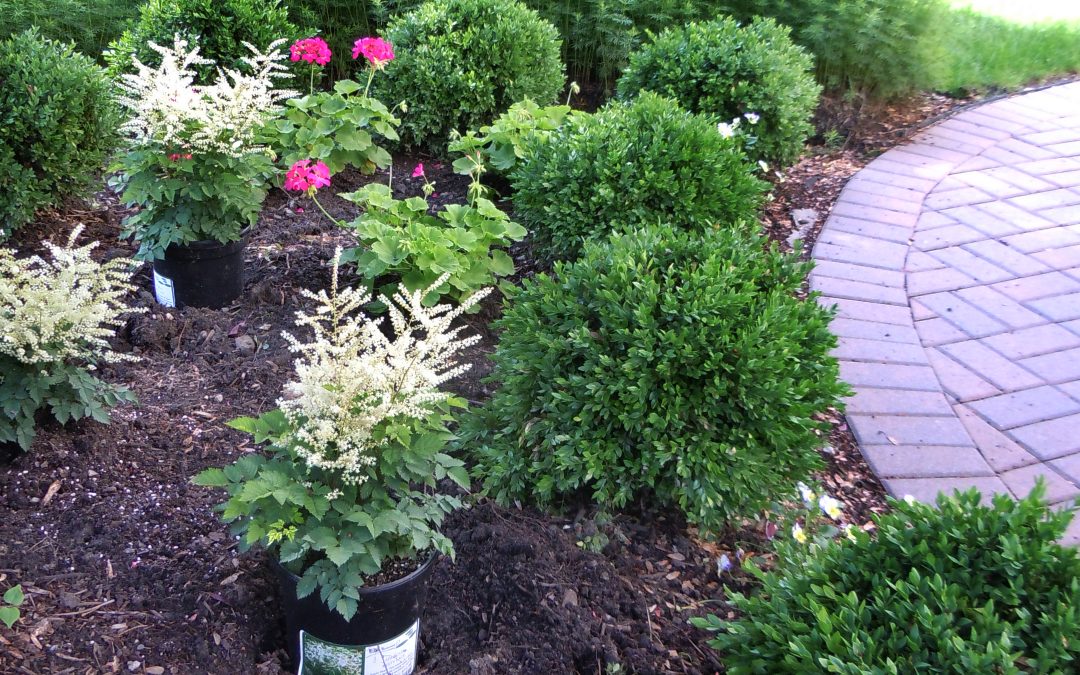By CHRISTOPHER KAZARIAN
Want to improve the aesthetics of your lawn? Add mulch.
Mulch, which is typically made from a variety of organic materials including leaves, wood chips, grass clippings, peat moss, bark chips or compost, is much more than outdoor eye candy. “Mulch is a weed inhibitor,” Chris Turner, landscape foreman for Sagamore Mulch & Stone, explained. “It cuts down on the amount of weeds that would otherwise flourish. Also, it can be a nutrient enricher… It allows the roots to be at a fairly consistent temperature, retains water and keeps the surface roots of your plants from drying out.”
Clearly there are a number of reasons why residents should consider it for their yard. As to when to do so, local landscapers said there is no right or wrong time of the year.
Dan Crowley, owner of Emerald Landscapes in Mashpee, prefers to mulch his customers’ yards in the spring. “Doing it in the fall kind of defeats the purpose,” he said. “I do 90 percent of my mulching in the spring… once all the shrubs start flowering, it makes the mulch pop out and enhances the landscape.”
When it comes to mulch, there are a number of options. The more expensive mulch, Mr. Crowley said, uses chemical dyes to bring out the color. These include black forest mulch (rich, dark brown) and a hemlock blend (red) which can cost upwards of $46 per yard. Cheaper options, he said, can cost roughly $20 per yard less.
Many landscapers and even suppliers like Mahoney’s Garden Centers in East Falmouth, get their mulch from manufactures, some of which are off-Cape. Mahoney’s carries five varieties – hemlock; aged hemlock; dyed black mulch; a premium mix of hemlock and pine spruce; and pine spruce—made by Oldcastle in Maine.
Although the store sells its mulch in bulk, store manager Richard Claudio said customers can purchase individual, smaller bags that match all the varieties they sell.
While residents can opt to purchase from a large retailer, typically at a cheaper price, Mr. Claudio warned against doing so. “They don’t get the quality mulch,” he said. “That’s the reason why it’s cheaper.”
The one product he and others warned against using was wood chips. This material, which consists of smaller pieces of chopped up wood, can attract termites.
At Hamilton Tree & Landscape in East Falmouth, landscape division manager Jesse Hamilton said customers choose different mulches for personal reasons. “It really depends on your preference,” he said. “Some like the different colors. Some like a certain smell. There is a wide variety of products and colors to choose from.”
While synthetically dyed mulches are popular among homeowners, he said, they can pose a problem for those with pets. “When it’s wet, they get the dye on their feet and trot through the house and spread the dye everywhere so it makes a little bit of a mess,” Mr. Hamilton said. “I’m not the biggest fan of it. I push the dark brown [pine bark mulch]. It is natural and a little cheaper.”
Whatever variety one chooses, Mr. Hamilton said, the general rule of thumb is to use an inch and a half to a two-inch layer for new installations. “That’s a good base of organic material to use as nutrients for plants,” he said. “It’s also a good initial barrier to help with weeds.”
Residents can opt to apply mulch every year or every other year. Either way, Mr. Hamilton said, residents should be cautious as to how much they put down during subsequent applications. He suggested just enough to bring fresh, new color to one’s yard.
He warned against applying too much mulch as it can be harmful to plants, leading to diseases. This can also trick plants into building their root system up higher so that they abandon their old root system which can sap their energy.
While homeowners can mulch in the fall, Mr. Hamilton agreed with Mr. Crowley, suggesting they wait until next April or May to do so. “An early spring application I find is best,” Mr. Hamilton said. “It wakes up their garden and compliments the new plants that are going to be flowering.”

